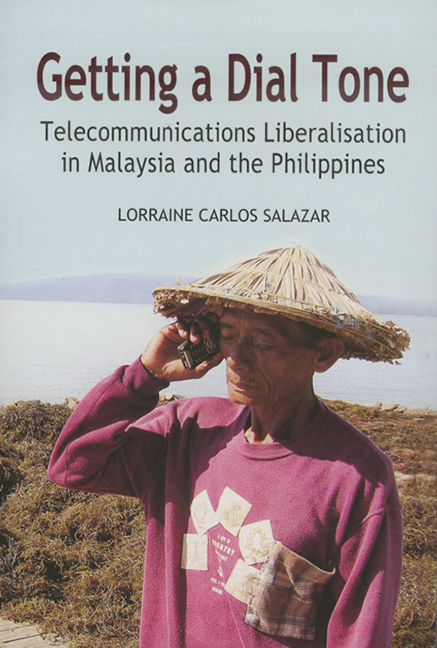Book contents
- Frontmatter
- Dedication
- Contents
- Map of Malaysia and the Philippines
- List of Tables
- List of Figures
- List of Appendices
- List of Abbreviations
- Acknowledgements
- 1 Rent-Seeking, Market Reforms, and States
- 2 Reviewing the Literature: Theories and Puzzles
- 3 Historical Overview of the State and Business in Malaysia and the Philippines
- 4 The Telecommunications Sector in Malaysia and the Philippines Before Reform
- 5 Reforming the Malaysian Telecommunications Sector
- 6 The Liberalisation of Telecommunications in Malaysia
- 7 Regulatory Reforms in Malaysia
- 8 Reforming the Telecommunications Sector of the Philippines
- 9 The New Players and the Service Area Scheme
- 10 Regulatory Reforms in the Philippines
- 11 Conclusions
- Appendices
- Bibliography
- Index
- About the Author
7 - Regulatory Reforms in Malaysia
Published online by Cambridge University Press: 21 October 2015
- Frontmatter
- Dedication
- Contents
- Map of Malaysia and the Philippines
- List of Tables
- List of Figures
- List of Appendices
- List of Abbreviations
- Acknowledgements
- 1 Rent-Seeking, Market Reforms, and States
- 2 Reviewing the Literature: Theories and Puzzles
- 3 Historical Overview of the State and Business in Malaysia and the Philippines
- 4 The Telecommunications Sector in Malaysia and the Philippines Before Reform
- 5 Reforming the Malaysian Telecommunications Sector
- 6 The Liberalisation of Telecommunications in Malaysia
- 7 Regulatory Reforms in Malaysia
- 8 Reforming the Telecommunications Sector of the Philippines
- 9 The New Players and the Service Area Scheme
- 10 Regulatory Reforms in the Philippines
- 11 Conclusions
- Appendices
- Bibliography
- Index
- About the Author
Summary
The need for regulatory reform became evident after the adoption of privatisation and liberalisation policies in the telecommunications industry, as was the experience of countries worldwide. Although market opening greatly improved the availability of telephone services, regulations were needed to ensure the development of infrastructure in line with the country's needs, the presence of competition, and the protection of the public interest.
The chapter describes how Malaysia legislated regulatory policies and established regulatory institutions after privatisation and liberalisation. Interactions among state actors, the former monopolist, new private players, and international consultants shaped Malaysia's regulatory responses. International actors played an important role, but domestic political considerations were the decisive factors. In particular, the Prime Minister's strong commitment to the use of information and communications technology (ICT) and the development of information technology (IT) infrastructure as important for the country's next stage of development led to a forward-looking regulatory regime.
This chapter reviews the regulatory regime under JTM before looking into the creation of the Communications and Multimedia Commission (CMC), the new regulatory body that operates based on the principles of convergence. A final section summarises the experience of Malaysian telecommunications reforms.
REGULATION UNDER THE JABATAN TELEKOM MALAYSIA
In contrast to the Philippines, where telecommunications have always been in the hands of the private sector, a government department in Malaysia provided the services and regulated the sector before privatisation and liberalisation. Only after the corporatisation of Telekom was Jabatan Telekom Malaysia (JTM) directed to act as a separate regulator.
In 1985, the Legislature amended the Telecommunications Act 1950 authorising the transfer of JTM's operational responsibilities to its successor company, Telekom Malaysia (Telekom). Meanwhile, JTM was restructured to take on a new regulatory role while remaining an office under the Ministry of Energy, Telecommunications, and Posts. Section 3B of the Telecommunications Act spelled out the duties and responsibilities of the Director-General of the JTM:
to exercise regulatory functions in respect of the conduct of telecommunications and the running of telecommunications services and their enforcement, and to promote the interests of the consumers, purchasers and the use of telecommunications apparatus in Malaysia in respect of the quality, the prices charged for, the variety of services available, and the apparatus supplied.
- Type
- Chapter
- Information
- Getting a Dial ToneTelecommunications Liberalisation in Malaysia and the Philippines, pp. 198 - 224Publisher: ISEAS–Yusof Ishak InstitutePrint publication year: 2007

